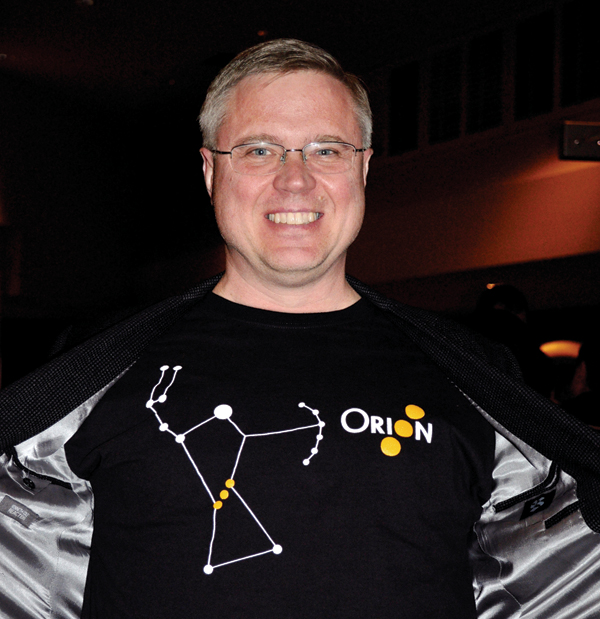SANTA CLARA — Mike Milinkovich, director of the Eclipse Foundation, said that Eclipse’s many projects and community efforts are all pushing firmly towards this summer’s Indigo release train for Eclipse version 3.7. In an interview at this week’s EclipseCon (which ends today), he said it will be the most exciting release for Java developers in about five years.
“WindowBuilder is working hard to get in [to the Indigo release], and that’s going to give Eclipse developers a fully functioning GUI builder, with full round-tripping in the code,” he said.
“Google finally made that happen. The Sonatype guys have been doing a lot of work to make Maven integration a lot better. In Indigo, you’ll be able to edit files from the workbench and kick off builds from workbench.”
The only real question remaining about Indigo is whether or not the new Java 7-specific features will be ready in time. Milinkovich said that Java 7 is coming along and should be ready this summer, but the exact timing of that release is unknown, meaning the Indigo release train may not have all the information and final specifications it needs to fully support Java 7 when the next version of Eclipse is released.
The Eclipse Foundation also announced work on Orion, an attempt to create a Web-based Eclipse tooling package.
 Many companies were on hand at EclipseCon to show off their tools. AccuRev talked about its plans for Eclipse. Bradbury Hart, director of technology at AccuRev, said that developers are now more invested in overall projects within enterprises. As a result, dashboards and reporting capabilities aren’t just for managers anymore.
Many companies were on hand at EclipseCon to show off their tools. AccuRev talked about its plans for Eclipse. Bradbury Hart, director of technology at AccuRev, said that developers are now more invested in overall projects within enterprises. As a result, dashboards and reporting capabilities aren’t just for managers anymore.“We’ve always had a very strong integration with Eclipse,” he said. “At the end of the day, everything starts with the developer, and that’s their daily touchpoint. We have to deliver not just the check-in and commit functionality, but also to further integrate this with the process. With our stream browser, developers can be a part of and see the whole picture. We’re delivering visibility across the organization.”
Actuate displayed BIRT onDemand, its new cloud-based offering that allows developers and business intelligence workers to transfer their reports and analytics between systems and mobile devices.
Cloudsoft demonstrated its intelligent application mobility tools. The company offers developers a way to automatically move their applications and components between data centers and clouds based on network and usage restrictions. An application for trading stocks might need to move to a data center in New York during the day, then migrate to Japan or Europe when the markets there close in the afternoon. Cloudsoft’s mobility software works without any extra coding, but annotations can be used to explicitly control the movement of applications, if the developers so desire.
ZeroTurnaround’s JRebel tool has gained considerable traction, said David Booth, CEO of the company. He said his team went from four developers to 16 over the last year, and that revenues have quadrupled during the same time period. JRebel versions classes and resources individually, allowing developers to push out changes to libraries and files without having to rebuild or redeploy Java applications.
On the Eclipse project side of the fence, Milinkovich was highly complimentary of Xtext, a DSL construction framework that’s grown in popularity in Europe. Modeling is much more popular over there, he said, and Xtext allows developers to design a domain-specific language through the Eclipse Modeling Framework, and then output that language in whatever language is desired: from JavaScript to Java to C.
The Eclipse Foundation also grew in size during the conference. As the show kicked off, Google’s software engineering manager, Eric Clayberg, joined the Eclipse Foundation’s board of directors. That same day, Juniper announced it had joined the Foundation as a sponsor.
In conjunction with this news from Juniper, the networking company also announced it would begin to engage with the Eclipse Foundation to improve and expand its existing set of plug-ins focused on network programming. This package of tools allows developers to construct applications for Juniper’s Junos Space network application platform.
Eddie Amos, vice president of developer evangelism at Juniper, said that the company plans to expand its offerings within Eclipse, and he would not rule out the potential for starting new projects within the Foundation. Amos said that his presence at Juniper is indicative of the company’s plans to expand its appeal to mainstream enterprise developers; he previously handled marketing for Microsoft’s numerous development platforms, including .NET and Visual Studio.
“You’ll be hearing a lot more about us in terms of how we set things up,” he said. “Our approach is a little different. If you’re down on the box, you may program in C or C++. But we’re exposing everything as RESTful APIs, so you can use any programming language you’re familiar with.”






